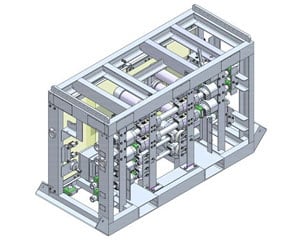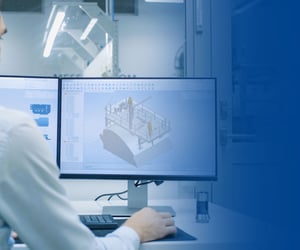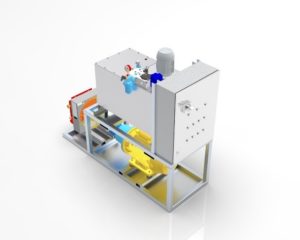“What are the hydraulic system design technical requirements?”
That’s the first question you’ll be asked when you approach a hydraulic engineering company asking for a new system. What do they mean by hydraulic technical requirements? This is the critical information related to the per
formance expectations of the system, and other project-specific details against which the final product will be measured. In this article, we’ll pose some of the most common questions that must to be answered before a custom hydraulic system design project can begin. This will give you a better idea of the information an engineering team requires to give you an accurate quote and an optimal system design.
Hydraulic System Design Technical Requirements. What Do You Need To Know?

What are the power and force requirements for the system?
Power and force requirements are the starting point for most engineers. This gives them an idea of how much work needs to be performed. This requirement will influence such factors as the size and power rating of hydraulic motors, hydraulic pumps and even hoses and couplings. The more force required, the more power is needed, and with extra power many other things may need to be beefier.
How many hydraulic cylinders are required and in what configuration?
Light, medium or heavy duty cylinders? Single acting or double acting cylinders? Telescopic or tandem cylinders? High speed hydraulic cylinders? There are many options to choose from and an experienced engineer will analyse the application and come up with a design concept that will specify the optimal number and configuration of hydraulic cylinders for the system in question. In simple applications, the answer to this question may be relatively straightforward, but in more specialised or unique situations, some inventive configurations may be required.
Do you know the stroking distance required for each of the cylinders?
The stroke of a cylinder is the distance it will travel, from fully closed to fully open. This dimension affects many factors in the design from the pressure rating required to other implications such as increased bending forces leading to wear on bearings and cylinder rods. All of this will be taken into account in the final design.

How fast will the cylinders operate and how hard will they work?
Do you know how fast each cylinder will need to extend and retract and how often it must do so? For example, a hydraulic press may move slowly and perform a small number of full cycles every day. Whereas a hydraulic cylinder on a manufacturing production line may need to perform hundreds of strokes every hour and do so around the clock. Depending on the speed and duty cycle required, the engineer may choose different hydraulic seal materials, fluids, and may also choose to reinforce certain components. These implications also extend beyond the cylinder to pumps, motors and various other components required to operate the system continuously and reliably.
What hydraulic system, control & automation features do you think you’ll need?
Depending on the nature of the application, your system may benefit from a myriad of electronic sensors, control units, computerised features and more, which can be engineered into your hydraulic system. There’s no end to the creative and high tech ways in which modern hydraulic systems can be implemented to provide extraordinary real time control, monitoring and automation of repetitive tasks. Inaccessible systems in remote or dangerous locations can be monitored or managed remotely, from anywhere. Applications that require pinpoint accuracy can be better managed by an automated, customised computer controlled system that will watch over your system. Think about how your hydraulic system can make your operation more hands-off, more efficient and safer.

Are there any other special features required?
Every hydraulic system will operate in a unique environment, and sometimes special features must be built into the design to accommodate for certain existing conditions, or make the system easier to maintain, etc. At the start of a project is a good time to consider the things that may enhance the lifespan of the system, or assist your operators and maintenance crews to do their jobs better or easier. There are many things you could consider, ranging from custom control panels with manual override options, to cooling fans, or heat exchangers, lockable control handles and many more.
Have you thought about moisture, corrosion resistance, dust resistance?
Where is your hydraulic system expected to operate? What conditions exist at that location? Will it need to live alongside the extreme heat of a steel forge? Or in the extremely corrosive marine environment, or will it need to deal with highly abrasive dust? Each of these scenarios presents its own challenges, and there may be many other unique factors associated with your particular situation. In every case, the engineer may make different choices regarding every part of the system - from hydraulic fluid viscosity to hydraulic seal materials, to the design of the enclosure.
Does your company or organisation have any regulations to consider?
Lastly, think about your organisation’s regulatory requirements. Large operations often have specific requirements that may dictate - for example - which brand of components can be used, or call for some safety features to be built-in.
Plan well and prepare your hydraulic system design project for success
To give yourself the best chance of a successful outcome, thoroughly prepare, plan and think through every aspect of your hydraulic system considering both the immediate requirements and the long term implications of the system on its operation and your operation as a whole. An experienced hydraulic engineering team has the knowledge to work through each of these aspects and help put together a plan that will provide the outcome you need while avoiding nasty surprises down the road.







Leave A Comment